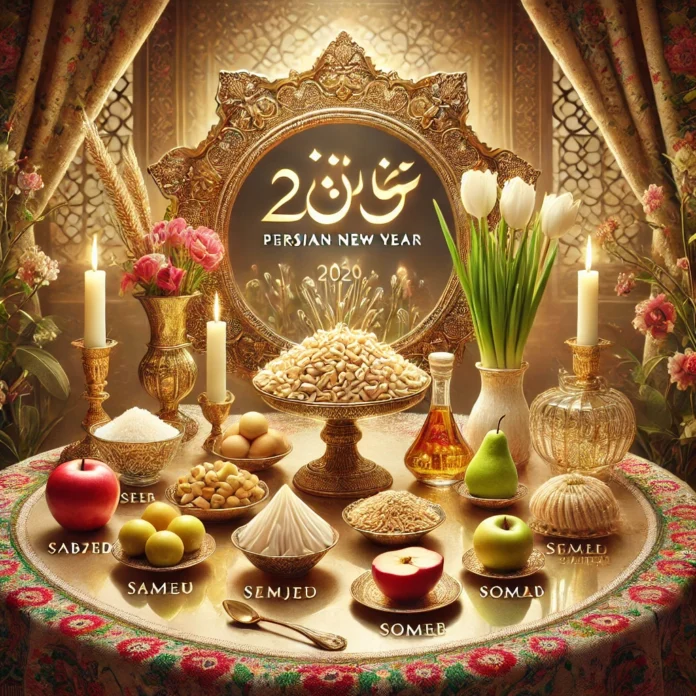
Nowruz 2025: Celebrations, Haft Sin, and Traditions Explained
As winter fades and the Northern Hemisphere welcomes spring, millions of people worldwide prepare to celebrate Nowruz 2025, the Persian New Year. Observed for over 3,000 years, this festival symbolizes renewal, balance, and prosperity. But what makes Nowruz so special, and why has it remained a significant cultural event across generations?
What is Nowruz?
Nowruz, meaning “New Day” in Persian, marks the first day of spring and the beginning of the Persian solar calendar year. Deeply rooted in Zoroastrian traditions, it remains one of the world’s oldest continuously celebrated holidays. The event aligns with the spring equinox, signifying a nearly equal day and night, reinforcing themes of renewal and rebirth.
When is Nowruz 2025?
Nowruz occurs at the exact moment of the spring equinox, which falls on Thursday, March 20, 2025, at 12:31:30 PM Iran Standard Time (9:01:30 GMT). Here’s how it translates across different regions:
- New York, USA: 5:01 AM EDT
- United Arab Emirates: 1:01 PM GST
- India: 2:31 PM IST
- Pakistan: 2:01 PM PKT
Where is Nowruz Celebrated?
Nowruz is widely observed in countries with Persian cultural influences, including Iran, Afghanistan, Azerbaijan, Tajikistan, Uzbekistan, Turkmenistan, and Kazakhstan. Kurdish communities in Iraq, Syria, and Turkey, as well as Parsi and Zoroastrian communities in India and Pakistan, also commemorate the holiday.
For an insightful guide to cultural festivals worldwide, check out UNESCO’s official page on Nowruz.
Nowruz Traditions: How is Nowruz Celebrated?
Nowruz is more than just a day of celebration—it’s a 13-day festival rich in tradition, symbolizing purification, new beginnings, and hope for the year ahead.
1. Khaneh Tekani (Spring Cleaning)
In preparation for the new year, families deep-clean their homes to remove bad energy and start fresh—a ritual similar to “spring cleaning” in Western cultures.
2. Haft Sin: The Seven Symbolic Items
A key tradition of Nowruz is the Haft Sin table, which includes seven symbolic items, each beginning with the Persian letter “S” (س):
- Sabzeh (Sprouts) – Signifying rebirth
- Samanu (Sweet Wheat Pudding) – Symbolizing wealth
- Senjed (Dried Lotus Fruit) – Representing wisdom
- Seer (Garlic) – A symbol of health
- Seeb (Apple) – Denoting beauty
- Somaq (Sumac) – Representing sunrise and patience
- Serkeh (Vinegar) – Symbolizing aging and wisdom
3. Chaharshanbe Suri (Fire Jumping Festival)
On the last Wednesday before Nowruz, people jump over bonfires chanting “Zardi-ye man az to, sorkhi-ye to az man,” meaning “Take my paleness, give me your redness,” symbolizing purification and good health.
4. Haji Firuz and Street Festivities
A joyous element of Nowruz is Haji Firuz, a traditional character who sings and dances in red attire, spreading happiness and announcing the arrival of spring.
5. Visiting Family and Elders
During Nowruz, people visit their elders, exchange gifts, and strengthen family bonds. Younger family members often receive Eidi (New Year gifts), typically in the form of money.
6. Sizdah Bedar (Nature Day)
On the 13th day of Nowruz, families leave their homes to enjoy nature, picnicking in parks and releasing Sabzeh (sprouts) into running water, symbolizing letting go of past negativity.
Nowruz in Islam: Historical and Religious Significance
Although Nowruz predates Islam, the holiday has been embraced within Islamic traditions. Imam Sadiq (AS) described Nowruz as a day when Prophet Abraham destroyed the idols, and Prophet Muhammad (PBUH) appointed Imam Ali (AS) as his successor on the day of Ghadeer.
Islamic scholars, including Alameh Majlesi, emphasized the spiritual significance of Nowruz, highlighting its connections with divine creation and renewal.
For deeper insights into the Islamic view on Nowruz, visit Islamic Studies Online.
The Expansion of Nowruz: From Ancient Persia to the Modern World
Even with changing rulers and evolving cultures, Nowruz has withstood the test of time. During the Abbasid and Safavid periods, the celebration flourished, blending Persian customs with Islamic traditions.
Today, Nowruz is officially recognized by the United Nations as an Intangible Cultural Heritage of Humanity, celebrated by over 300 million people globally.
The Symbolism of the Number Seven
The number seven holds great significance in Nowruz customs. It represents:
- Seven holy immortals in ancient Persian beliefs
- Seven heavens and seven levels of the earth in Islamic thought
- Seven Quranic verses starting with “S” for protection and blessings
This sacred number is also reflected in the Haft Sin table, reinforcing the festival’s spiritual and cultural depth.
Conclusion: Nowruz 2025 – A Celebration of Unity and Renewal
Nowruz is more than just a New Year celebration; it’s a powerful symbol of heritage, unity, and renewal. From its ancient Zoroastrian origins to its integration into Islamic traditions, Nowruz 2025 continues to bridge cultures and generations.
As you prepare for Nowruz 2025, take a moment to embrace its rich customs, reflect on new beginnings, and celebrate the power of renewal with loved ones.
For more updates on cultural celebrations and traditions, explore our blog and stay connected to the world’s vibrant festivals.

